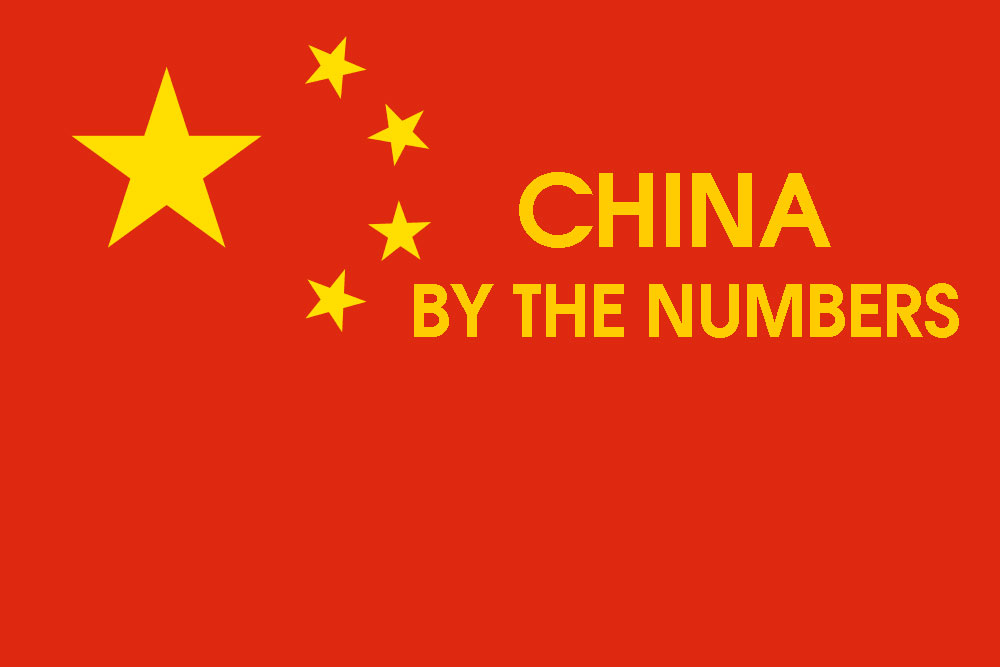China by the numbers

By Kathrine Moore

Photo Courtesy of Century Global
Commodities Corp.
When it comes to numbers, China dwarfs most other countries in terms of population, workforce, economics and trade. We pay careful attention to the numbers coming out of China. Its huge economic engine has been the main driver behind global commodity prices. When China’s economy was hot our resource sector benefited; when China’s appetite for commodities cools and shrinks, our resource sector slows.
Recently, the numbers and news coming out of China have not been so positive: slowing growth, market crashes, massive layoffs, zombie companies, and pollution replace articles focused on China’s spectacular economic growth.
At PDAC, I had an opportunity to sit down with Sandy Chim, President of Century Global Commodities Corp. [CNT-TSX], who had just recently returned from a trip to China. Chim’s extensive experience and knowledge of the Chinese market make him uniquely able to interpret the big numbers coming out of China and to put those numbers in perspective.
Headlines predict that China’s resource industry is set to lay off millions of workers. A CBC headline stated, “Massive layoffs coming as China confronts its overbuilt ‘zombie economy.'” In light of this, I asked Chim about the latest number out of China that we are all talking about, 6.5% GDP growth. China is committed to a growth rate of 6.5 – 7% over the next five years. I asked Chim if this seemed like a reasonable number. It is a number most in the resource sector would be happy with.
Chim explained that, “this number is a national target and China’s key historical economic numbers like GDP growth have been within the range of forecast by such multi-lateral institutions like the IMF, the World Bank, and OECD. All of China’s resources will be geared toward meeting this national goal.”
This number Chim says is “good guidance for companies and sectors that rely on trade with China. Historically, the key top line economic indicators tie well within reasonable range of such international verifiable statistics as its foreign exchange reserve levels, trading statistics with major western economies – from a trade point of view, China has an open economy and is the largest trading partner of many countries.”
When I asked Chim about the predicted layoff of millions of Chinese workers he stated that perspective is important. China’s work force is huge and it is a workforce that is largely part of the “Planned Economy” that existed before economic reform. There are still many SOEs (state-owned enterprises) though now the national goal is to open up and grow business through innovation and the encouragement of private enterprise. During the transition from a planned economy to a market economy it is expected that there will be some disruption and any percentage of China’s workforce will mean huge numbers when compared proportionately to, for example, Canada. Chim predicted that, “China will implement workforce wide re-training to facilitate the transition.”
China is a country capable of attaining monumental goals. It isn’t a democracy, and for better or worse, when China decides to achieve something, it can move ahead using all of its focused resources. The Silk Road Project is a good example. It was introduced by Chinese President Xi Jinping in 2013 and aims to link East and West and involves many countries. The land route is called China’s new Silk Road Economic Belt, the maritime component is named the Twenty-First Century Maritime Silk Road; the whole has been named One Belt, One Road. A $46 billion in investment in the China-Pakistan economic corridor going all the way to the Sea port of Gwadar was announced a year ago. The project will go a long way towards facilitating China’s economic transition while promising to bring prosperity to Asia and wider access to markets. (See Resource World April May 2105 issue)
How do recent events at the Shanghai Stock Exchange fit into the big picture? Chim said that in “1990, the Shanghai Stock Exchange was founded and the concept of a stock exchange was new in China. In fact, it is still an emerging market with limited listings. This makes for volatility.”
“The Chinese are very good savers”, says Chim. “They are interested in investing and once people develop and practice their analytical investment abilities and more companies come onto the exchange the market will stabilize.”
It is a mistake, Chim said, to extrapolate what happens on the Shanghai Stock Exchange. What happens on the exchange isn’t indicative of what is happening in the wider Chinese economy and mostly just reflects how a limited market behaves when inexperienced investors learn how to deal with an open market. The media, he said, presents “images and headlines that give these events greater significance and drama than they might deserve.”
Finally, I asked Chim about one of China’s most obvious challenges. We are all familiar with images of Chinese cities blanketed by thick clouds of pollution. I asked Chim to comment on the issue. He said that much of the pollution is generated by steel making and other heavy industries it developed so rapidly. It is a side effect of very fast economic growth.
Chim reminds us that China is an emerging economy much like North America in the early twentieth century; the Chinese are buying cars, building office towers and making steel to meet the needs of consumers with increased spending power. Chim said “controls tend not to be so astringent in emerging economies. But, the issue is obvious; it’s not something you can hide. The country’s leaders breathe the same air as anyone else.”
Again, China’s big numbers play a role. It is not that China’s steel making technology is outdated. China’s technology was, in fact, adopted from international steel making technology. Chim said that, “where the US has a 100 million tonne capacity today, China has a 1 billion tonne capacity.” That translates into smoggy cities. However, he said, “There is a national will to reduce pollution.” It will take a monumental effort, but China is used to big numbers and big projects.
